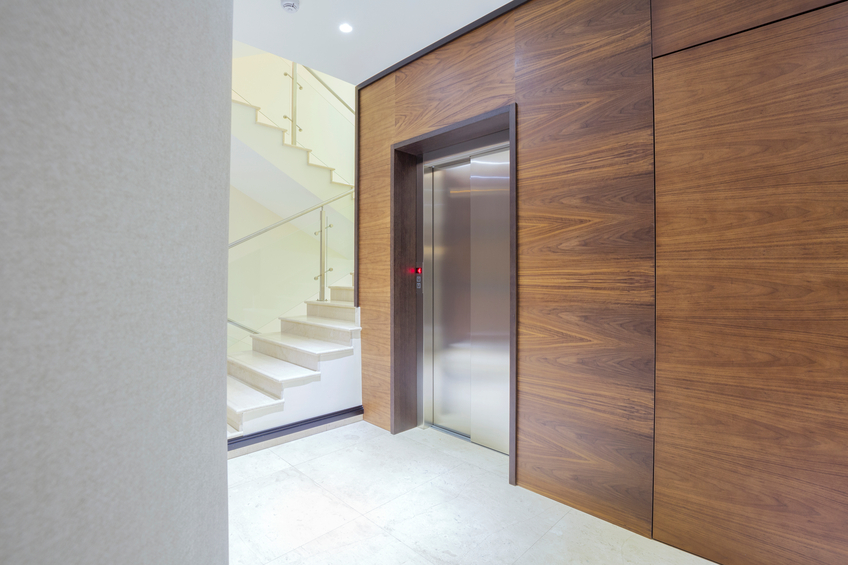Considerations When Installing a Residential Lift
Contents |
Introduction
Lifts were first created to solve the problem of vertical transport for people, animals and goods as buildings became taller. Residential lifts have become essential to society, as they allow a varied group of people to have access to all areas of a property
Since the first lift, which was recorded in history by Roman architect Vitruvius to have been built by Archimedes in 236 BC, lifts and lift technology have changed and evolved greatly.
Users
Lifts allow an increasingly ageing population to remain independent in their own homes. From 1974 to 2014, the average age of the UK population increased from 33.9 years to 40 years – an increase of 6 years.
The installation of home lifts has also allowed people with physical disabilities or illnesses that restrict their movement to access any space or room in their homes.
However, home lifts are not just used by people with physical limitations. The vast majority of users opt for a residential lift to simplify their movement within their homes. Access inside houses with several floors, whether they are refurbished properties or new constructions, is made easier with a lift.
Types of Home Lifts
There are several different types of lifts for the home, including:
- Hydraulic passenger lifts that can carry a large amount of weight, fit many people and carry large goods between floors.
- Lifts for stairs can be attached to the side of an existing staircase, so major alterations to the home are not needed.
- Disabled access lifts, such as platform lifts, which allow wheelchair users to easily overcome any staircases, no matter how many steps they have.
Lift Specifications
Different homes will require different lifts. The size of the cabin will depend on the number of people that will be using the lift, as well as their needs, and the pit size will depend on the features of the house. Some lifts can be installed without excavation, while others require a deep pit to be created.
Automatic sliding doors are easier to operate than accordion-style doors, which can prevent an elderly or disabled person from using the lift effectively.
It is also critical to consider other specifications of the lift, such as weight limitations, safety features, maximum travel speed and maximum floors allowed in a single journey.
Design
Whether modern or traditional, they need to be able to match the existing interior design – they can also clash with it in an aesthetically pleasing way if the user prefers.
Glass lifts can blend in seamlessly with their surroundings, so that they remain as hidden as possible. This option is popular with homeowners who want their décor to be visible at all times. Scenic lifts offer luxury and are visually appealing, which can complement the interior design of the home.
There are many different types of lifts, and there is also the possibility of going bespoke – meaning that the home lift will be unique to a particular user and cannot be found anywhere else.
Find out more
Related articles on Designing Buildings Wiki
- Access and inclusion in the built environment: policy and guidance.
- Access consultant.
- Approved document M.
- Changing lifestyles.
- Firefighting lift.
- Hoists.
- Home lifts.
- Inclusive design.
- Lift motor room.
- Lift Standards: EN 81-20 and EN 81-50.
- Lifts.
- Lifts and Escalators: A Quality Perspective.
- Lifts for office buildings.
- Lifting Operations and Lifting Equipment Regulations (LOLER).
- Non-discriminatory building design.
- Platforms lifts and how they benefit people.
- Railings.
- Ramps.
- Stairs.
- The importance of service lifts.
- The science of lifts.
--Nathan Massey 14:42, 11 Jul 2017 (BST)
Featured articles and news
A change to adoptive architecture
Effects of global weather warming on architectural detailing, material choice and human interaction.
How big is the problem and what can we do to mitigate the effects?
Overheating guidance and tools for building designers
A number of cool guides to help with the heat.
The UK's Modern Industrial Strategy: A 10 year plan
Previous consultation criticism, current key elements and general support with some persisting reservations.
Building Safety Regulator reforms
New roles, new staff and a new fast track service pave the way for a single construction regulator.
Architectural Technologist CPDs and Communications
CIAT CPD… and how you can do it!
Cooling centres and cool spaces
Managing extreme heat in cities by directing the public to places for heat stress relief and water sources.
Winter gardens: A brief history and warm variations
Extending the season with glass in different forms and terms.
Restoring Great Yarmouth's Winter Gardens
Transforming one of the least sustainable constructions imaginable.
Construction Skills Mission Board launch sector drive
Newly formed government and industry collaboration set strategy for recruiting an additional 100,000 construction workers a year.
New Architects Code comes into effect in September 2025
ARB Architects Code of Conduct and Practice available with ongoing consultation regarding guidance.
Welsh Skills Body (Medr) launches ambitious plan
The new skills body brings together funding and regulation of tertiary education and research for the devolved nation.
Paul Gandy FCIOB announced as next CIOB President
Former Tilbury Douglas CEO takes helm.
UK Infrastructure: A 10 Year Strategy. In brief with reactions
With the National Infrastructure and Service Transformation Authority (NISTA).
Ebenezer Howard: inventor of the garden city. Book review.
Airtightness Topic Guide BSRIA TG 27/2025
Explaining the basics of airtightness, what it is, why it's important, when it's required and how it's carried out.























